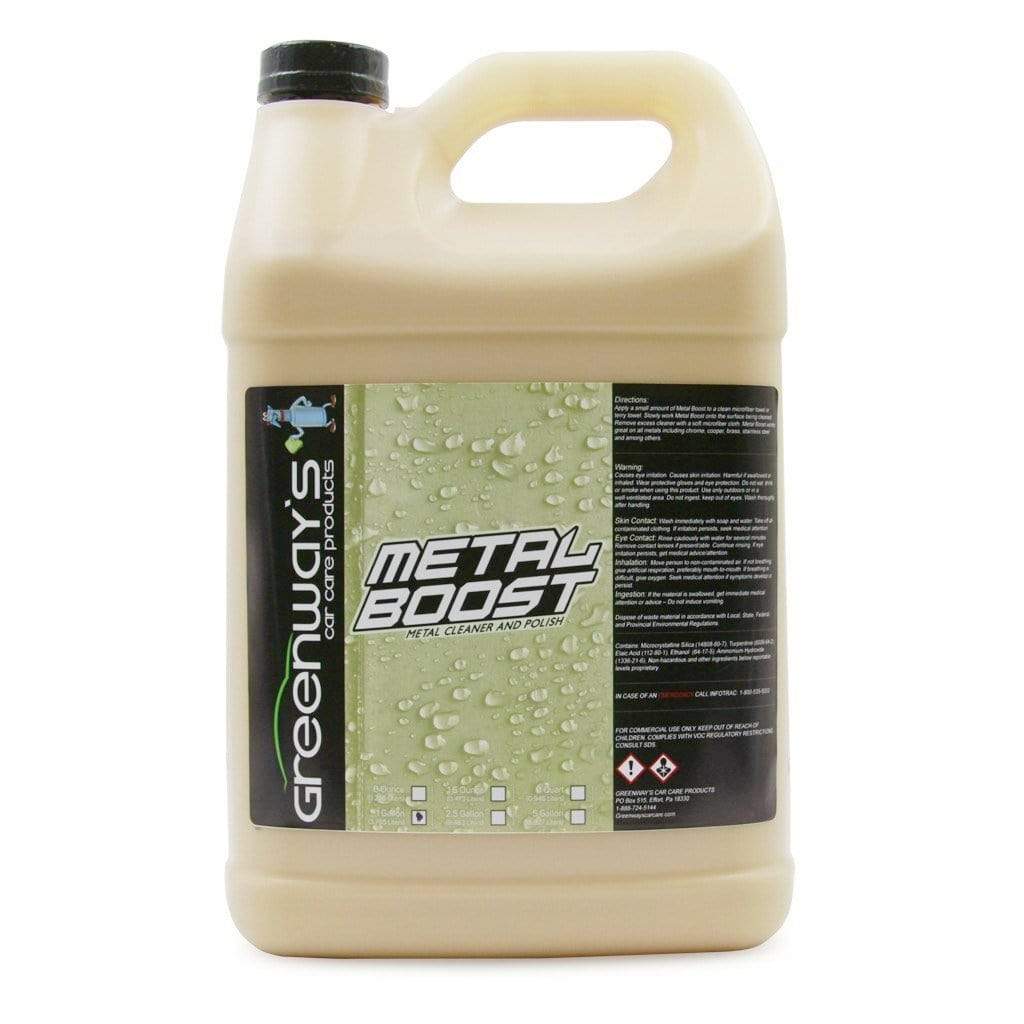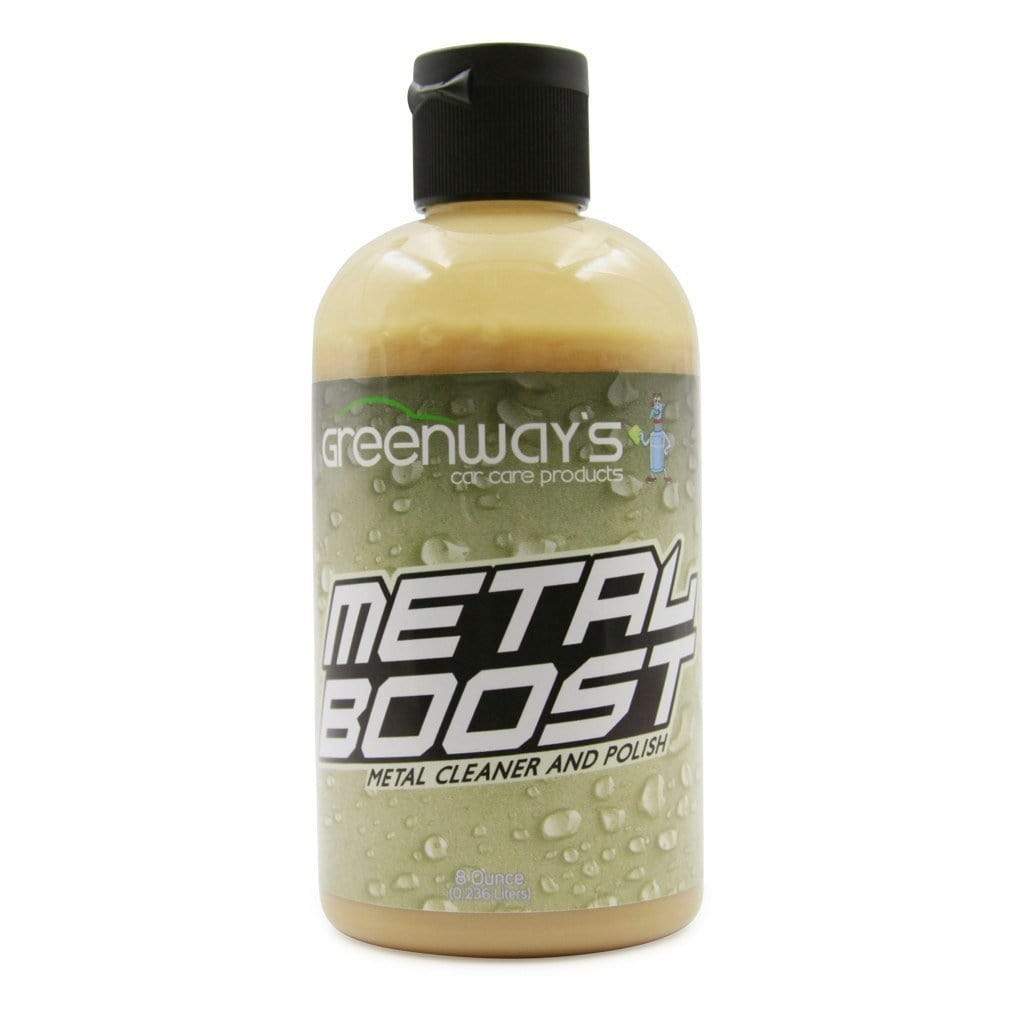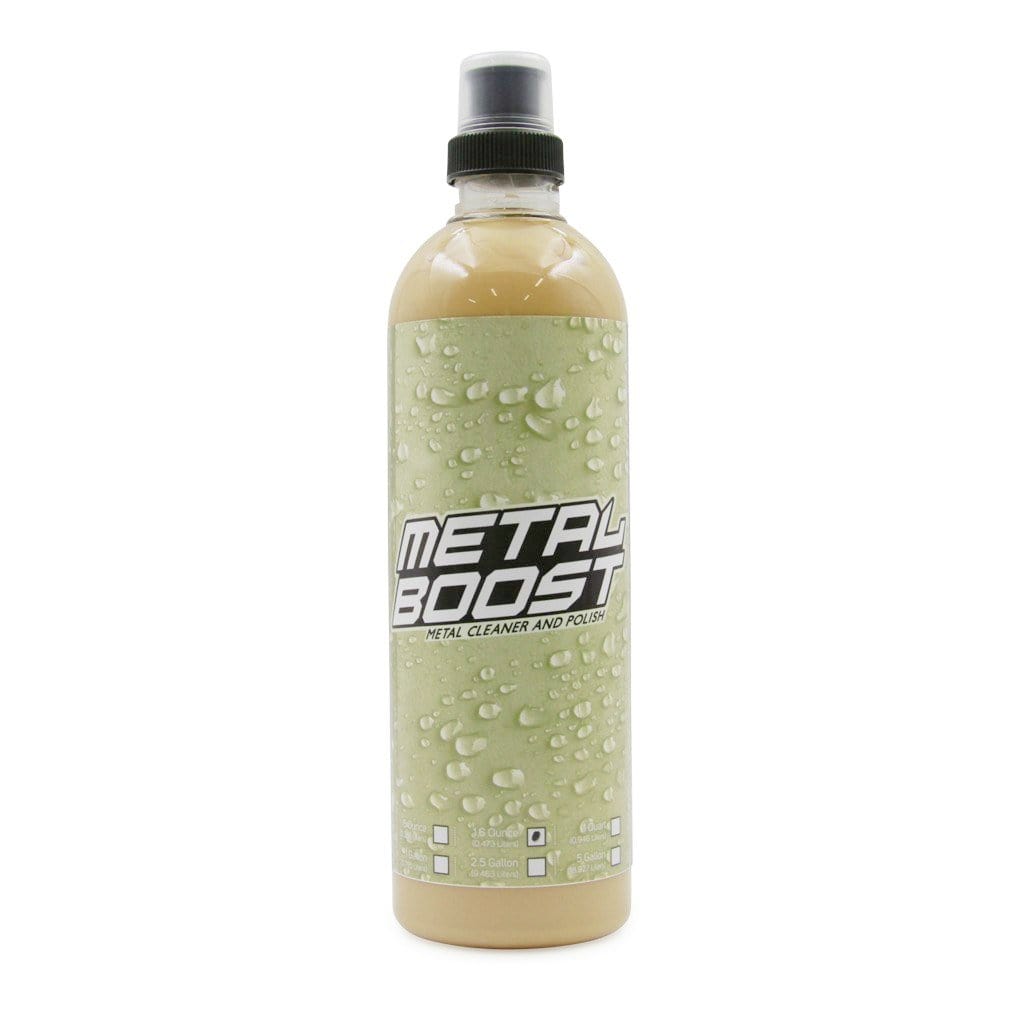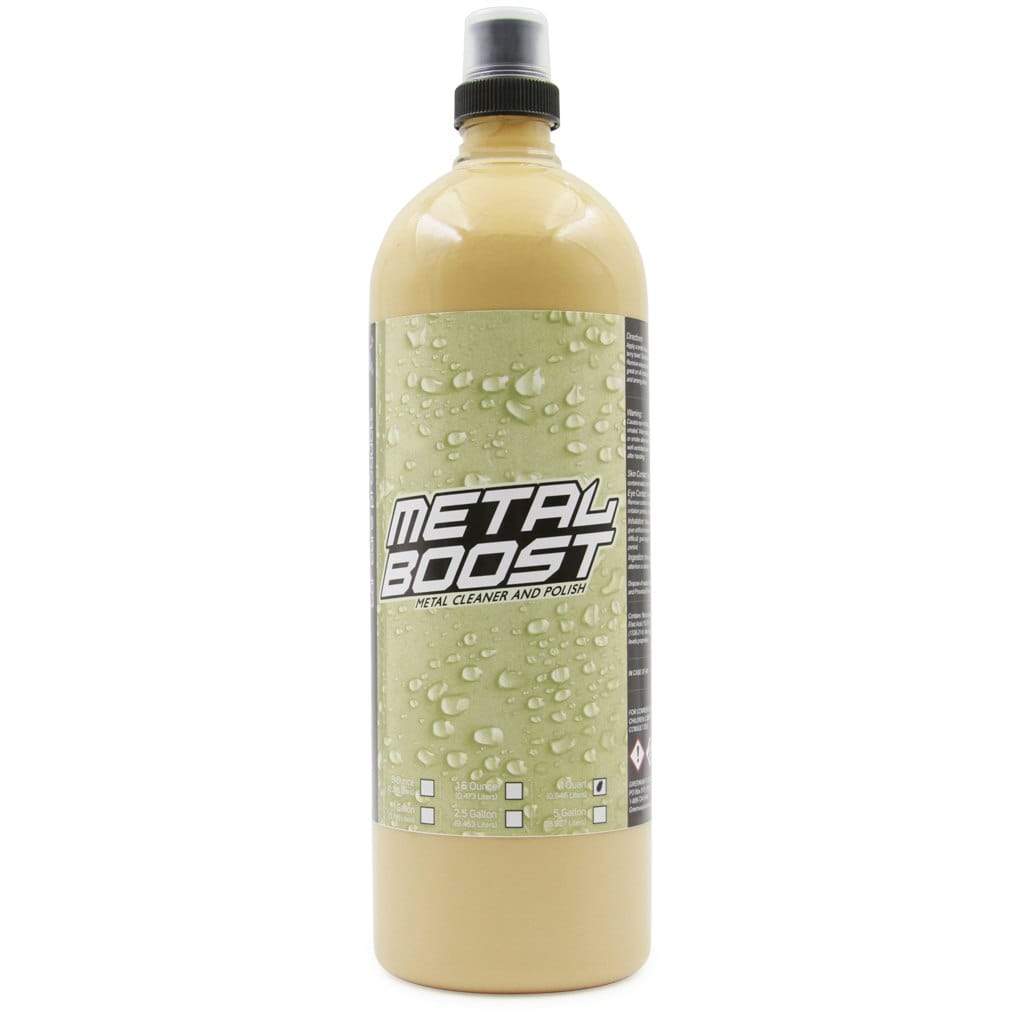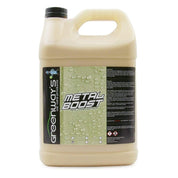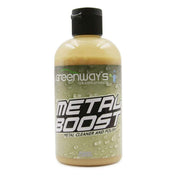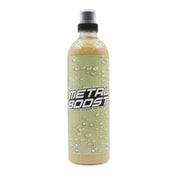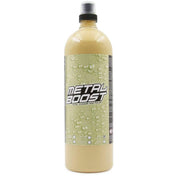Greenway's Metal Boost
Get quick access to our straightforward shipping and return policies, ensuring a smooth shopping experience every time.
To know more please click here.
Explore essential tips and resources to launch your own successful mobile auto detailing service with confidence. Read the blog here.
Unlock exclusive discounts and promotions to maximize your savings on top-quality detailing products. Check our "Sale" page.
-
Bring the life back to all metals
-
Metal Boost works excellent on chrome, stainless steel, billet, brass, copper, and more
-
Use by hand or machine
-
Cleans as it polishes
-
Removes rust, discoloration, light scratches, and other metal defects
Greenway’s Metal Boost is the perfect way to “bring back the life” to all metals. Metal Boost immediately restores all metals to a fantastic shine. Metal Boost cleans and polishes all metals in one easy step. You will be amazed how quickly Metal Boost removes rust, discoloration and restores metals to a near-new appearance. Metal Boost works quickly by hand or can be applied using a variety of buffing machines.
Metal Boost quickly restores tarnished metal surfaces such as chrome, stainless steel, aluminum, billet, brass and copper, and many other metals. Promptly remove stains, oxidation, tar, water spots, and rust.
Many metals show deterioration from exposure to sunlight, rain, snow, and other environmental conditions. When these metals are left untreated for an extended time, replacement is eventually needed. Using Greenway’s Metal Boost, you can quickly extend the appearance and life of many metal surfaces. Metal Boost works great on bumpers, emblems, trim pieces, exhaust tips, diamond plates, center caps, and household items.
How to Use:
You can easily apply Metal Boost by hand or a machine. We suggest using small buffing pads attached to a buffer or a standard drill for large areas.
Machine Use:
It is easier to spread the product on the surface first using an applicator. If you decide to use a cloth, some of the product will be absorbed permanently into the fabric, allowing product waste. Using a foam-filled applicator with Metal Boost will allow a more evenly distribution onto the surface.
Once you pick your tool of choice, whether it is a standard drill with a foam polishing ball or a machine buffer with smaller in diameter buffing pads, slowly work the machine up to speed as the polish starts to disappear. Stains, rust, and discoloration should gradually disappear as you work the product into the surface. If you have a seriously neglected surface you are trying to rejuvenate, you may need a second application of Metal Boost.
The speed at which you will run the machine will vary by the type of machine you are using. This is where trial and error will come into play, as each surface will present unique challenges when combined with your machine of choice. If you are using a buffer, we suggest always starting with the least aggressive pad first and frequently checking your work. Doing so will avoid using a buffing pad that is too strong for the surface and possibly add additional marring as you attempt to correct the defects.
Each metal type will react differently to Metal Boost as each kind of metal has unique characteristics.
Chrome:
Chrome is typically chrome plated and referred to only as chrome. The plating helps provide a decorative look on a vehicle, but these chrome plating types are exceptionally thin and need protection before they are ruined beyond repair. If the chrome is not peeling off of the surface, you should be able to bring the chrome back to a brilliant shine.
If you are using a machine, please use caution if any surface edges start to lift. The machine can quickly peel back chrome plating areas on bumpers and other surfaces where the negligence of maintenance caused the chrome plating to peel. Do these areas by hand to avoid the possibility of making the surface appear worse.
We always suggest running the machine at a lower speed and continually checking your work. You can check your work using a soft microfiber cloth to remove the remaining Metal Boost and observe the surface. Using Wipe Away can help remove the excess product if you apply too much Metal Boost. Only mist Wipe Away onto the Metal Boost and wipe off with a clean microfiber cloth. Using a terry towel can cause the plating to appear dull and “swirled” due to the fiber’s aggressiveness. While a terry towel could be great for hand polishing, we do not recommend removing the product when using a machine.
Many users like to use #0000 or #000 steel wool when polishing severely neglected chrome plating. To remove the marks created from the steel wool, we suggest that you have experience with using a buffer. While the significant defects will quickly remove with the steel wool, many minor imperfections will appear more severe than they are. Remove these minor defects by using a foam buffing pad attached to your machine of choice. Removing steel wool marks by hand can be accomplished, but it is a very tedious task.
Many of the newer vehicles do not use much chrome plating. The contemporary look that many manufactures use is color-matched panels, bumpers, trim pieces, and wheels. Protect these areas in virtually the same way as the main portion of the vehicle body. Use caution when polishing plastic bumpers and trim as you can quickly burn through the plastic since the smaller buffing pads will be producing concentrated heat in that area.
Aluminum:
Find aluminum on many trailers, tractors, engine components, horse trailers, airstreams, tankers, motorcycles, boats, diamond plate boxes, and more. Many people have a hard time determining if the surface is steel or aluminum. Using a magnet can tell you what the material is to proceed in the right direction. (If the magnet does not stick to the surface, the material is most likely aluminum).
Uncoated or bare aluminum:
This surface will quickly show a black residue on your cloth or foam buffing pad once Metal Boost is applied.
Coated Aluminum:
No black residue will be present on your cloth or buffing pad. Also, the surface will typically have a smoother overall feel and slickness before applying any products.
Anodized Aluminum Wheels:
It is the same as clear-coated wheels, and no color or minimal color will be present on the towel’s surface or buffing pad.
Polishing aluminum can be very time-consuming and tricky. It all depends on what type of polishing that you are trying to do. To polish a tractor-trailer tank, wheels, or other aluminum surfaces that need extensive polishing, learning how to use a rouge polishing bar is ideal for achieving the best possible result. Accomplish this type of aluminum polishing with a grinder at very high speeds and not a buffer at slower speeds like many autos detailing product suppliers recommended. Combined with an Airway style buff wheel, these grinders will operate at a rate of up to 6000 RPM. We believe this type of polishing is a specialized skill but is typically not utilized by a professional detailer. Many aluminum technicians typically polish aluminum only and have all the proper tools, protective wear, and knowledge to mirror reflective results.
Stainless Steel:
Stainless steel is an excellent metal that is very corrosion resistant, low maintenance, and does not stain easily. Metal Boost is incredible to use on Stainless Steel as well, and you will not need another metal polishing product to achieve a noticeable difference in shine and appearance. Many of the same techniques used to polish aluminum are applied when polishing stainless steel. Again, we must consider the amount of stainless one is trying to polish and whether these components face heavy commercial use and exposure to extreme environmental factors. Most auto detailing industry users are typically looking to touch up and polish small areas like exhaust tips. Many other newer cars are not stainless steel but are carbon fiber, aluminum, and plastic. Using #000 or #0000 steel wool on exhaust tips combined with Metal Boost helps restore the tips to a like-new appearance.
Most of you reading this article are interested in polishing wheels and other components that are not used daily for commercial purposes. Below are some easy steps to obtain excellent results when polishing these aluminum components found on many vehicles.
-
Always make sure the surface you are working on is spotless and cool to the touch. Remove any heavy brake dust, debris, and other grime during your wash stage.
-
Apply Metal Boost to the surface and gently work back and forth with a microfiber towel. If you need more “cut,” you can use a terry towel to aid the cotton fibers’ more aggressive polishing method.
-
Remove remaining residue with a soft microfiber cloth. Using a detail spray such as Wipe Away can help you remove any excess Metal Boost. Most users typically apply too much product and then have a thicker residue left on the surface. More is not always better.
-
If polishing sand in other larger areas, using a smaller buffing pad can significantly reduce hand fatigue and speed up the process. You can also use a buffing ball that can be attached to any standard drill. A machine will typically be more powerful and provide a better result in a shorter amount of time.
-
You can even remove excess Metal Boost by rewashing the larger surfaces with one of our pH-balanced shampoos. Rewashing will help remove Metal Boost in hard-to-reach areas much quicker than a small brush can. Washing the Metal Boost off with a soft wheel brush or microfiber mitt will not ruin your results.
-
Most new vehicles do not contain much aluminum besides wheels. Even if they have some aluminum pieces on them, the aluminum is painted and will not need the above extensive methods to maintain the surface condition. These areas can be protected as the main portion of the vehicle body since the aluminum is painted and then clear coated.
Car Detailing Tech Tip:
-
Many surfaces on newer vehicles are painted metal and then clear coated. The same methods used on the painted surface body can apply to these areas. We always suggest being careful when using smaller buffing pads at higher speeds. Induce clearcoat failure due to excessive heat and abrasiveness caused by machine buffing with a metal polish.
-
Always start with your least aggressive polishing pad and work your way up to a more aggressive pad. Doing so will eliminate any chance of adding defects onto the surface from using a pad and chemical combination that is too strong.
-
Washing Metal Boost off using a pH balanced solution, and small soft detail brushes can save time. Trying to wipe out cracks and crevices from small areas can be time-consuming and even impossible, depending on the product sling or excess residue location.
-
We advise against trying to polish aluminum surfaces that are relatively large and used for commercial use. This type of aluminum polishing is for the dedicated professional familiar with Airway wheels, rogue bars, and operating a grinder at speeds up to 6,000 RPM. Your professional detailer can typically complete accent pieces and wheel polishing.
-
Steel wool is a great accessory to use while polishing many metal surfaces. Just be aware that applying too much pressure while using #000 (okay) or #0000 (superfine) can cause additional marring that you can only remove using a machine.
-
If you are working on older classic vehicles, be sure to charge accordingly for metal polishing. Metal polishing can be very time-consuming, and you may not achieve customer-pleasing results due to long term customer neglect making the metal not repairable by your professional detailer.
-
The type of towel will change your outcome. A terry towel provides tremendous cutting capabilities, while a soft microfiber towel will provide excellent application and removal of polish on maintained metal surfaces.

